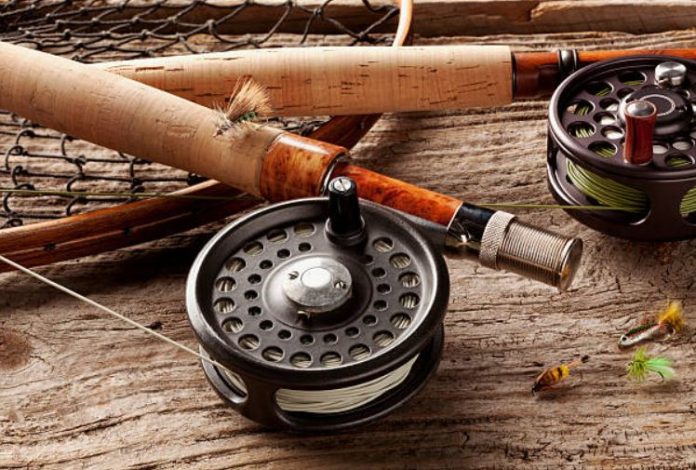Fly fishing has always been less widely known than other, more traditional fishing styles in the USA, and it is only in the last couple of decades or so that it has been gaining popularity steadily. So it may sometimes be necessary to tip the beginner about the essential fly fishing gear.
The art of fly fishing has developed around the concept that flies form a substantial portion of the normal diet of a fish, and that if you can design lures and baits shaped like flies, with the right technique you should be able to fool the fish into accepting the bait as dinner.
So naturally, the most important part of your gear when you’re stocking up to go fly fishing is the fly itself.
What kind of fly you need depends on where, how, and which species you plan to catch. For instance, if you’re fishing for trout in a fast-flowing, chilly mountain stream using the ‘flipping’ technique, you’ll want the fly to stay as close to the surface of the water as possible.
What you’re basically trying to do is cast the fly in the water at a forty-five-degree angle upstream from you and let it bounce down the current, while you sweep the tip of your rod in a slow arc to keep the line’s angle constant. A fly that goes deep underwater would obviously be little use in such a situation.
What you need here is something that’s called a ‘dry’ fly in angling jargon, meaning a fly that is coated with a special substance that makes it float at or near the water’s surface.
However, there are other situations where ‘wet’ flies, those that sink in water, are more appropriate. But then again, wet flies have many subcategories there are nymphs, lures, and there are the true wet flies, each applicable in its own place.
So before you buy your flies, get expert opinion or read up on what size, shape, and variety of fly you need for the species and the location you have in mind.
You fly fishing rod can be anything between 6 feet to 14 feet long, but the beginner should stay within the safe intermediate range of 8 to 10 feet. Of course the length will vary with where you are fishing.
Saltwater fly fishing rods are considerably shorter than those used for freshwater fishing because it helps in negotiating the faster streams and stronger winds. Your first rod shouldn’t be too expensive.
Improve your technique with a cheap glass rod or maybe carbon fiber, and as you gain experience you can work your way up to boron or more pricey materials.
And that is generally true of all the fly fishing equipment you’re going to need. You’ll do well to get yourself a pair of comfy dark glasses, to cut the glare off the water (fly fishing is mostly done in the daytime).
A small pair of scissors will prove to be invaluable when you’re faced with cutting knots and stuff. A small box for preserving the flies in, a large waterproof bag in which you can dump all of the above, etc. are the things that you usually miss unless reminded by someone with more experience.
But whatever you buy, remember that you shouldn’t blow your money on equipment while you’re still learning the ropes. Fly fishing gear can cost you well over a couple of thousand dollars if you really let yourself go, but with a little looking around you can get yourself a reasonable set of essentials for US100, give or take some.

